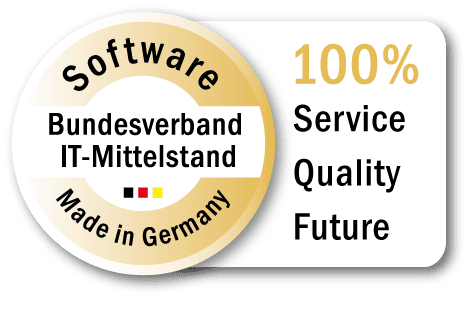The Azure IoT Hub is a cloud-based service from Microsoft that has been specially developed for the Internet of Things (IoT). It provides a central platform for managing IoT devices and processing IoT data in the Microsoft Azure Cloud. Due to the increasing popularity of the Azure Cloud in the manufacturing industry, the Azure IoT Hub is also becoming increasingly important in the factory.
The hub acts as a central switching point to enable communication between IoT devices and cloud applications. The service is therefore used in a wide range of IoT applications and scenarios, such as industrial automation, smart cities, building management, healthcare and agriculture.
The Advantages in an Industrial Context
The strengths of the Azure IoT Hub lie in particular in its scalability and integration options in the Azure world. The advantages in an industrial context include:
- Scalability: The hub is highly scalable and can be easily expanded with increasing requirements in the factory or across factory boundaries.
- Security: The service offers comprehensive security functions. These include, for example, support for X.509 certificates, integration with Azure Active Directory and data encryption.
- Protocol support: The hub supports various communication protocols, including MQTT, AMQP and HTTP, which enables flexible integration of IoT devices.
- Integration with Azure services: The service is seamlessly integrated with other Azure services, including Azure Stream Analytics, Azure Functions and Azure Machine Learning. This facilitates the development of IoT applications and the seamless processing of IoT data.
Azure IoT Hub in the Factory
The Microsoft service has proven to be a powerful solution for recording device data in industrial environments. Here are some of the most important functions and uses:
- Device management: The hub enables the registration, management and monitoring of IoT devices. This includes assigning access rights, updating device information and setting configurations for devices.
- Bidirectional communication: The service enables secure and bidirectional communication between cloud applications and IoT devices. This enables commands to be sent to devices and data to be received from the devices in real time.
- Real-time monitoring: With Azure IoT Hub, you can monitor data in real time and receive notifications about status changes or events in your IoT devices. This enables a rapid response to problems in production.
i-flow and Azure IoT Hub
In combination, i-flow and Azure IoT Hub offer a valuable solution for realizing an efficient and hybrid edge-to-cloud architecture. i-flow acts as an interface between the edge and the cloud to harmonize heterogeneous data from production systems and transfer it to the hub.
In this way, i-flow complements the hub by enabling seamless integration of the edge and cloud levels, orchestrating data flows bidirectionally and providing automation functions to optimize data processing and analysis at both levels. While i-flow acts as a link and data processor, the hub ensures robust and secure availability of data for Azure IoT services in the cloud.


